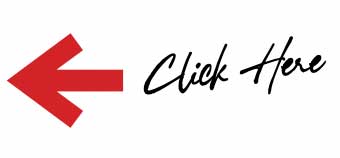As you progress in your sewing journey, one question you'll eventually run into is what's the difference between quilting machines and sewing machines.
RELATED: 10 Affordable Sewing Machines Recommended For Beginners
Difference Between Quilting Machines And Sewing Machines
1. Work Space

Basically, a quilting machine is also a sewing machine but it simply has a wider range of add-ons and capabilities a regular sewing machine doesn't have.
The working space of a quilting machine is far wider than a regular sewing machine. Since quilts are huge and bulky projects, it is only suitable for the work area of a quilting machine to be spacious, too.
In simple terms, the longer the machine, the wider the throat, the larger the work area. Usually, a sewing machine with a throat measurement of 9 inches wide by 6 inches high is considered a quilting machine.
2. Extension Table
A quilting machine also has an allotment for an extension table. Since it's meant for bigger projects, this will give you that extra boost in space ensuring easier maneuverability while quilting.
If your project involves adding borders, bindings, or even a queen-size quilt, then getting a quilting machine is a must. If you're looking for a brand that includes an extension table accessory, the Janome line of quilting machines is something you should consider.
3. Quarter Inch Foot Add-On Option
Machine piecing a quilt top is hard to do in a sewing machine and that's where the quarter inch seam allowance option available in a quilting machine comes in.
The quarter-inch piecing foot allows you to perform quilting with high accuracy and this feature is especially helpful for quilting projects that normally have a narrow seam allowance. This is usually included in the package when you buy a quilting machine.
If you already have one and are just looking for this particular feature, look for the AcuFeed Quarter Inch Foot add-on.
RELATED: What Is The Best Leather Sewing Machine For You
4. Darning or Free-Motion Foot Add-On Option
Having this feature for free-motion quilting makes free motion quilting or darning foot a lot easier. This foot guarantees perfect stitch formation, it minimizes skipped stitches and puckering. It also puts your fingers in a safe position since the fabric moves freely under the needle.
If you're a newbie, this will help you tremendously when practicing freehand quilting. The open toe version exponentially improves visibility of stitches and quilters are usually very particular with this.
To obtain this top-notch output when free motioning, set your needle to left needle position. This is a very important feature so be sure to look for it when you're just about to buy a quilting machine.
5. Walking Foot Add-On Option
If your quilting machine is not blessed with an AcuFeed™ System, don’t sweat it because the Walking Foot feature will also get the job done. This feature is basically a second pair of feed dogs meant to assist the top of your project.
This gives you the extra boost needed to feed through multiple layers so that you won't have a hard time quilting heavy and slippery fabrics. What's more, quilting in straight lines becomes a lot more convenient with this feature. If you are just planning to buy a quilting machine, look for this add-on first.
6. Number of Stitches

Decorative stitches can go a long way if you're using a quilting machine. Quilting with decorative stitches is an excellent way to add flavor and style to your quilt especially when dealing with borders.
Janome quilting machines excel in this department like the Janome MC15000 Quilt Maker, MC14000, MC9400QCP, and MC6700P machines. Each machine's quilting designs have over 200 built-in stitches to choose from.
7. Sewing Speed & Stability
What makes a quilting machine a tier above a sewing machine is its stability and fast sewing speed. Serious quilters and those who do this for a living should definitely consider getting one since a high-speed machine equates to faster project completion.
You may want to look at Janome's line of quilting machines that include the Janome MC6700P, MC6600, 1600P-QC, MC15000 Quilt Maker, MC14000, and MC9400QCP. These machines are capable of breezing through projects at speeds of up to 1600 SPM.
Usually, machines built with such features translate to a sturdier work area to withstand the speed of the motor. These stability features are evident through the extra-wide flatbed and solid workspace foundation. These machines check all these boxes.
If you want to learn how to differentiate sewing machines, watch this video by Create and Craft USA:
You should now have an easier time choosing which machine you will use for specific projects now that you know the differences between sewing machines and quilting machines.
There are projects that should turn out just fine with a regular sewing machine, but there are also projects that are only possible to finish if you use a quilting machine. Indeed, the finish of your projects can greatly vary depending on the machine you are using so be sure to use the right equipment. From the casual sewist to the seasoned seamstress, you can never go wrong as long as you're equipped with the right tools.
Do you know of other major differences between a sewing machine and a quilting machine? Sound off in the comments below!
UP NEXT:

